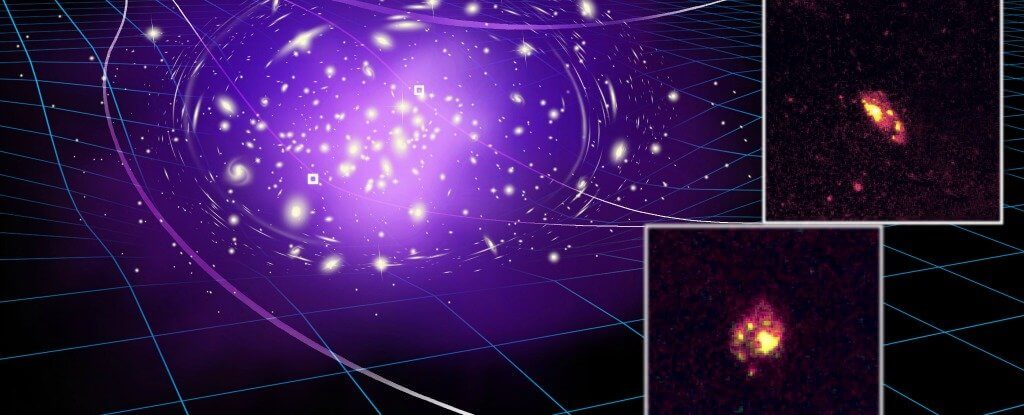
With the help of space telescopes like the Hubble astronomers are trying deeper and deeper look inside the cosmic web of the Universe. After all, the farther you look, the further back in time you penetrate, and it allows you to see how the universe looked billions of years ago. With the launch and operation of other even more advanced technology, telescopes and observatories, scientists are unable to study in more detail the history and evolution of the cosmos.
Recently, an international team of astronomers with a telescope “Gemini North” Gemini Observatory, located on mount Mauna Kea, on the island of Hawaii, has discovered a spiral galaxy located 11 billion light years from us.
Using new technique of combining gravitational lensing and spectrography, the scientists were able to see the object that existed at 2.6 billion years since the Big Bang. Galaxy got the name A1689B11 and is currently the oldest ever discovered spiral galaxies. About his discovery, astronomers have shared in the pages of the latest issue of the journal The Astrophysical journal.
To find the galaxy A1689B11 allowed method of gravitational lensing. This method is very often used by astronomers and involves the use of very large objects (e.g. galaxy clusters) as a kind of lens which allows light of the object located behind the lens of her to go around. This light astronomers and monitor.
In a press release, Swinburne University of Technology astronomer, day by day hotel yuan, head of the research group, writes:
“This method allows us to study ancient galaxies with very high visual resolution and an unprecedented level of detail. We were able to observe the galaxy as it was 11 billion years ago, and became direct witnesses of the formation of the first primitive spiral galactic arms”.
After that, the researchers used a spectrograph NIFS (Near-infrared Integral Field Spectrograph), mounted on the telescope “Gemini-North” to confirm the structure and nature of the most ancient spiral galaxy. The tool was created by astronomer Peter McGregor the Australian national University. The scientist is responsible for its calibration and proper operation.
Thanks to a recent discovery, scientists have obtained additional information about how galaxies acquire their form. According to the famous astronomer Edwin Hubble’s classification of galaxies (Hubble sequence) there are three main types of these objects – elliptical, lenticular and spiral — as well as a fourth additional category, called irregular galaxies.
According to this classification, all the galaxies begin with the formation of elliptical structures, and then modified and take the form of a spiral, lenticular or irregular galaxies. Therefore, the opening of this very old spiral galaxy is particularly important for understanding when and how the earliest galaxies began to change its shape from elliptical and purchase more modern.
“The study of ancient spiral galaxies, such A1689B11, is an important link in understanding the mysteries of how and when did the Hubble sequence. Spiral galaxies were very rare in the early Universe, and this discovery opens the door for us to study the transition from galactic very chaotic, turbulent disk shape in a much more relaxed, thin galactic disks like our milky way galaxy,” — says study co-author, astronomer at Princeton University, Renue Prices.
But the most interesting in the opening A1689B11 is that this spiral galaxy shows some extremely amazing features that reveal more detail and make to ask new questions about this period in the history of the cosmos. As yuan said, these features contrast vividly against the background of more modern galaxies of the same type.
“Compared to younger galaxies of the same type in this ancient galaxy new stars are forming 20 times faster. Almost at the same level as in young galaxies with similar mass that existed in the early Universe,” says yuan.
“However, unlike other galaxies of the same era A1689B11 has a very cold and thin disk rotating in a very calm, surprisingly, with very low turbulence. Such type spiral galaxies belonging to the epoch before us do not ever see”.
In the future, a team of astronomers hopes to conduct additional studies of this galaxy in order to analyze in more detail its structure and nature, as well as compare it to other spiral galaxies of the same era. Of particular interest to scientists is the question of the origin of the spiral arms, projecting a kind of marker of the transition between the ancient elliptical galaxies to a more modern, spiral, lenticular and irregular.
Discovered the oldest spiral galaxy in the Universe
Nikolai Khizhnyak